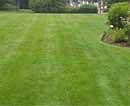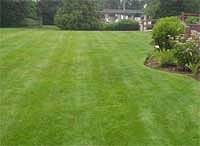

Turfgrass lawns help remove carbon dioxide (CO2) from the air through photosynthesis and store it as organic carbon in soil, making them important “carbon sinks”.
However, greenhouse emissions from fertiliser output, mowing and other lawn management practices are four times greater than the amount of carbon stored by ornamental grass in parks, a University of California-Irvine (UC-I) study shows.
These emissions include nitrous oxide released from soil after fertilisation. Nitrous oxide is a greenhouse gas that's 300 times more powerful than CO2, the earth's most problematic climate warmer.
“Lawns look great - they're nice and green and healthy, and they're photosynthesising a lot of organic carbon," said Amy Townsend-Small, UC-I post doctoral researcher in earth system science, who led the study.
"But the carbon-storing benefits of lawns are counteracted by fuel consumption,” said Townsend. The research results are important to greenhouse gas legislation being negotiated, said a UC-I release.
“We need this kind of carbon accounting to help reduce global warming,” Townsend said. “The current trend is to count the carbon sinks and forget about the greenhouse gas emissions, but it clearly isn't enough.”
These findings are slated for publication in Geophysical Research Letters.